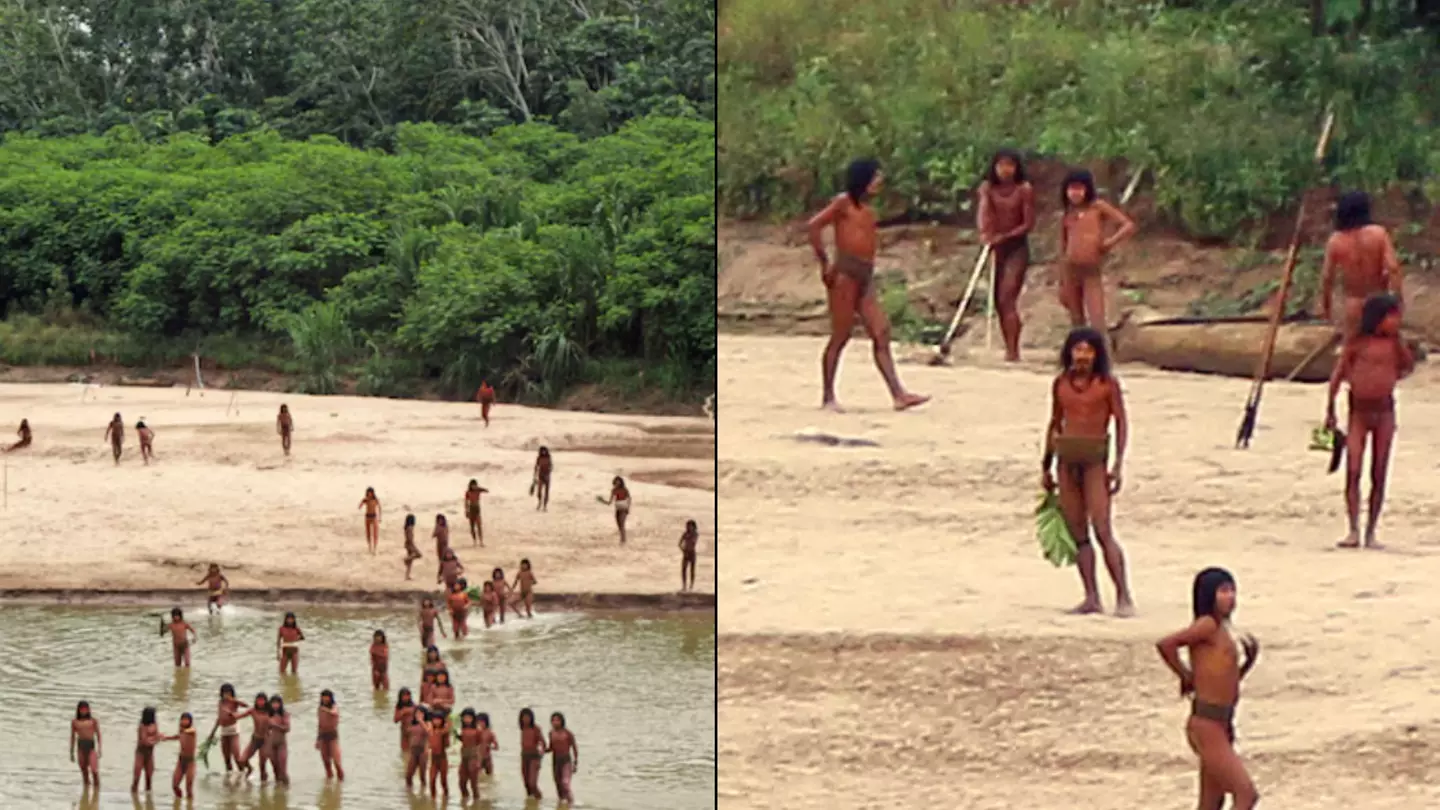
Rare footage of the world’s most isolated and uncontacted tribe shows the indigenous community break cover.
This comes two months before the Mashco Piro group – who have limited interactions with outsiders – killed two lumberjacks with a bow and arrow in Peru’s Amazon on Thursday (29 July).
Watch the members emerge from a remote part of the Amazon below:
Last week, two people died and another two were reported missing after the Mashco Piro people clashed with a group of loggers.
Daniel Pena, a spokesperson of FENAMAD, which represents 30 communities in the region, confirmed the incident in a statement, as reported by Reuters.
FENAMAD said that at least two workers were killed, two were still missing and another was injured.
The Ministry of Culture also said on Monday (2 September) that the clash ‘may have caused deaths, injuries and disappearances’.

The tribe emerging from their homes in July (Survival International)
Meanwhile, the footage taken by Survival International from July shows 50 of the 750 people emerging from their homes in the forest.
Though the Mashco Piro have developed a reputation of having limited interactions with outsiders, at least four people have been killed by the tribe from 2015 to 2022.
They basically live on rainforest resources and avoid disease by not coming into contact with people.
This comes after human rights organisation Survival International complained about the number of logging concessions.
“Several logging companies hold timber concessions inside the territory that belongs to the Mashco Piro people,” they said.
“The nearest is just a few miles from where the Mashco Piro were filmed.
“One company, Canales Tahuamanu, that operates inside the Mashco Piro territory has built more than 200km of roads for its logging trucks to extract timber.
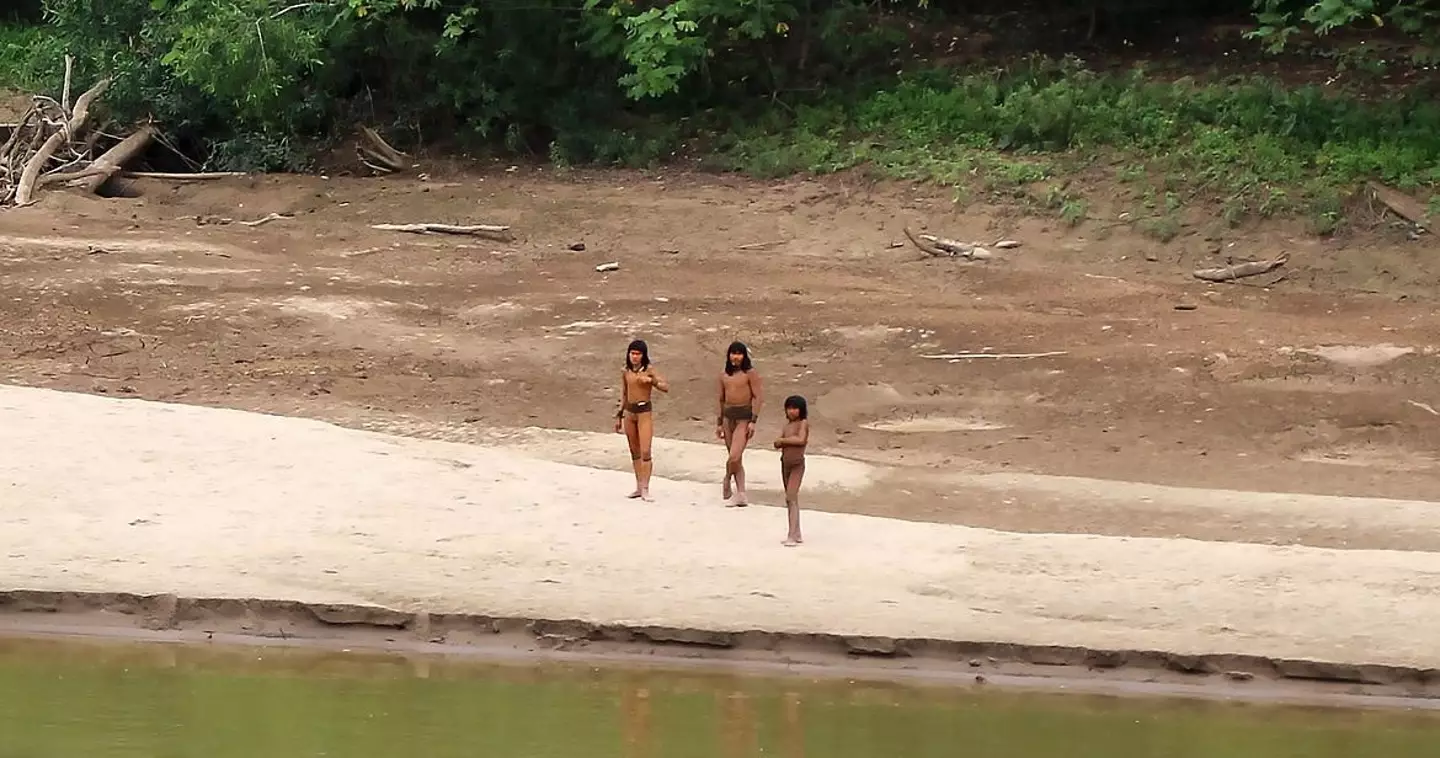
This comes two months before the Mashco Piro group killed two lumberjacks with a bow and arrow in Peru’s Amazon (Survival International)
“It is certified by the FSC (Forest Stewardship Council) for its supposedly sustainable and ethical operations there, despite the Peruvian government acknowledging eight years ago that it is cutting down trees within Mashco Piro territory.
“Survival International is calling on the FSC to withdraw its certification of the company’s operations.
“More than 8,000 people have already lobbied the FSC.”
Alfredo Vargas Pio, President of local Indigenous organisation FENAMAD, added: “This is irrefutable evidence that many Mashco Piro live in this area, which the government has not only failed to protect, but actually sold off to logging companies.
“The logging workers could bring in new diseases which would wipe out the Mashco Piro, and there’s also a risk of violence on either side, so it’s very important that the territorial rights of the Mashco Piro are recognised and protected in law.”
LADbible has contacted FENAMAD, the FSC and the Ministry of Culture for comment.
Featured Image Credit: Survival International
Topics: World News
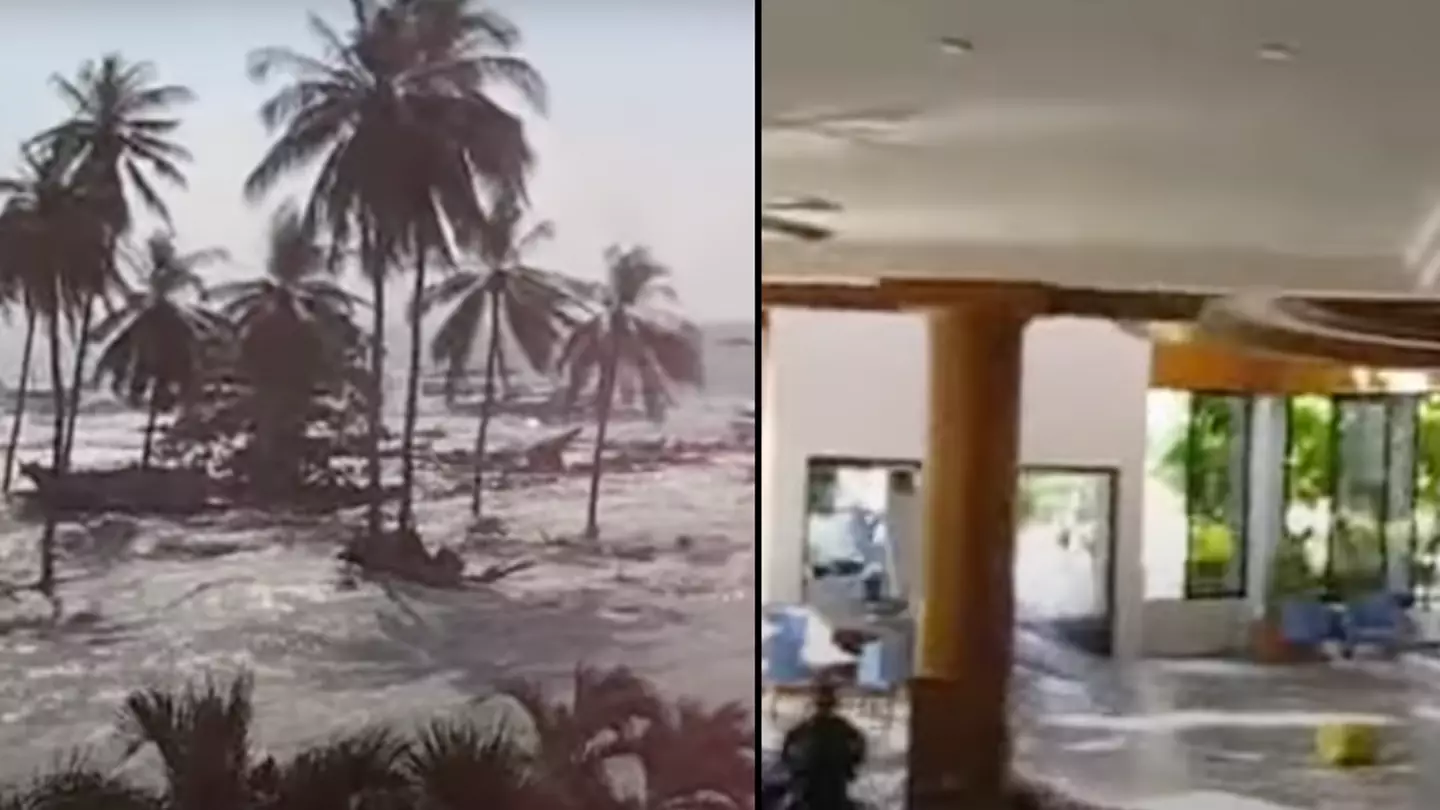
Rare footage from a tourist shows the devastating aftermath of the 2004 Boxing Day tsunami disaster.
It was around 228,000 people that died as a result of the 9.1 magnitude earthquake and giant tsunami that bulldozed into Indonesian coastlines on 26 December 2004.
It was one of the largest natural disasters ever recorded, and had devastating consequences for several countries.
Over two decades on from the disaster, many of the towns and villages have been rebuilt or totally transformed.
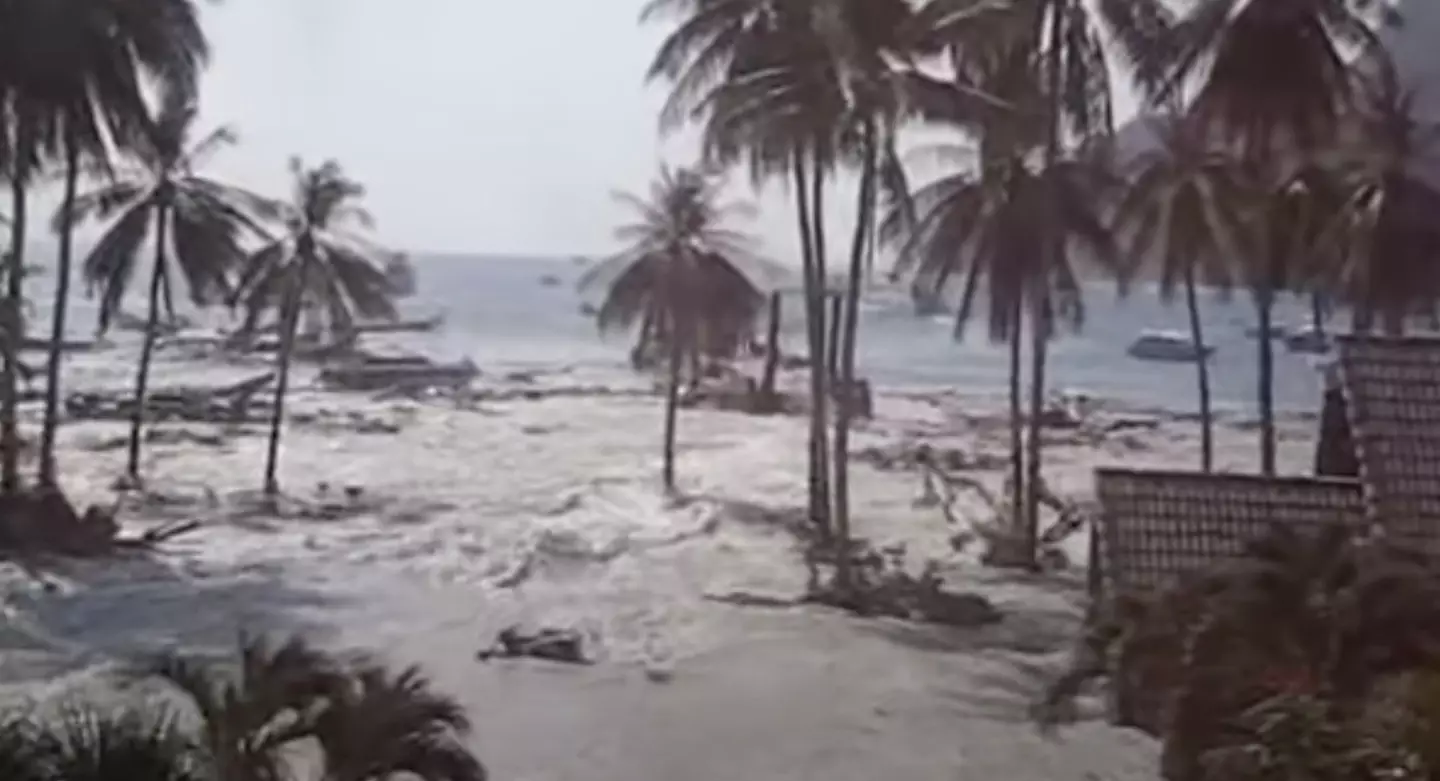
The 2004 tsunami was one of the largest that has ever been recorded. (YouTube/@kallewidelius9395)
The estimated total cost of the damage from around Indonesia was $10 billion (£6.4 billion).
It was thought that 141,000 houses were destroyed, which accounted for 47 percent of the entire damage.
Footage from a tourist who managed to survive the enormous waves reveals the devastating impact of the natural disaster.
One of the most badly affected parts was an island off Thailand called Koh Phi Phi, which is where the video was taken.
The small island was completely vulnerable, and was attacked by the giant waves from every angle.
The video shows water pouring into hotels, with people running up the stairs to the highest point for protection.
The tourists were able to film the devastation from a window on a high floor, and everything below appeared to be totally submerged.
Houses were flooded, buildings collapsed, as the waves reached a hight of 65-100ft in some places.
For many, they had no chance of escaping to safety.
Joe Giardina was on holiday at the time of the disaster, with his wife, Ivana, and son, Paul, in Phuket.
Speaking to ABC News, he said: “I said, ‘My God, look at that. That’s an extraordinary wave. It’s come up onto the footpath’, but it kept coming.
“I didn’t anticipate this thing to develop into a wall of water.
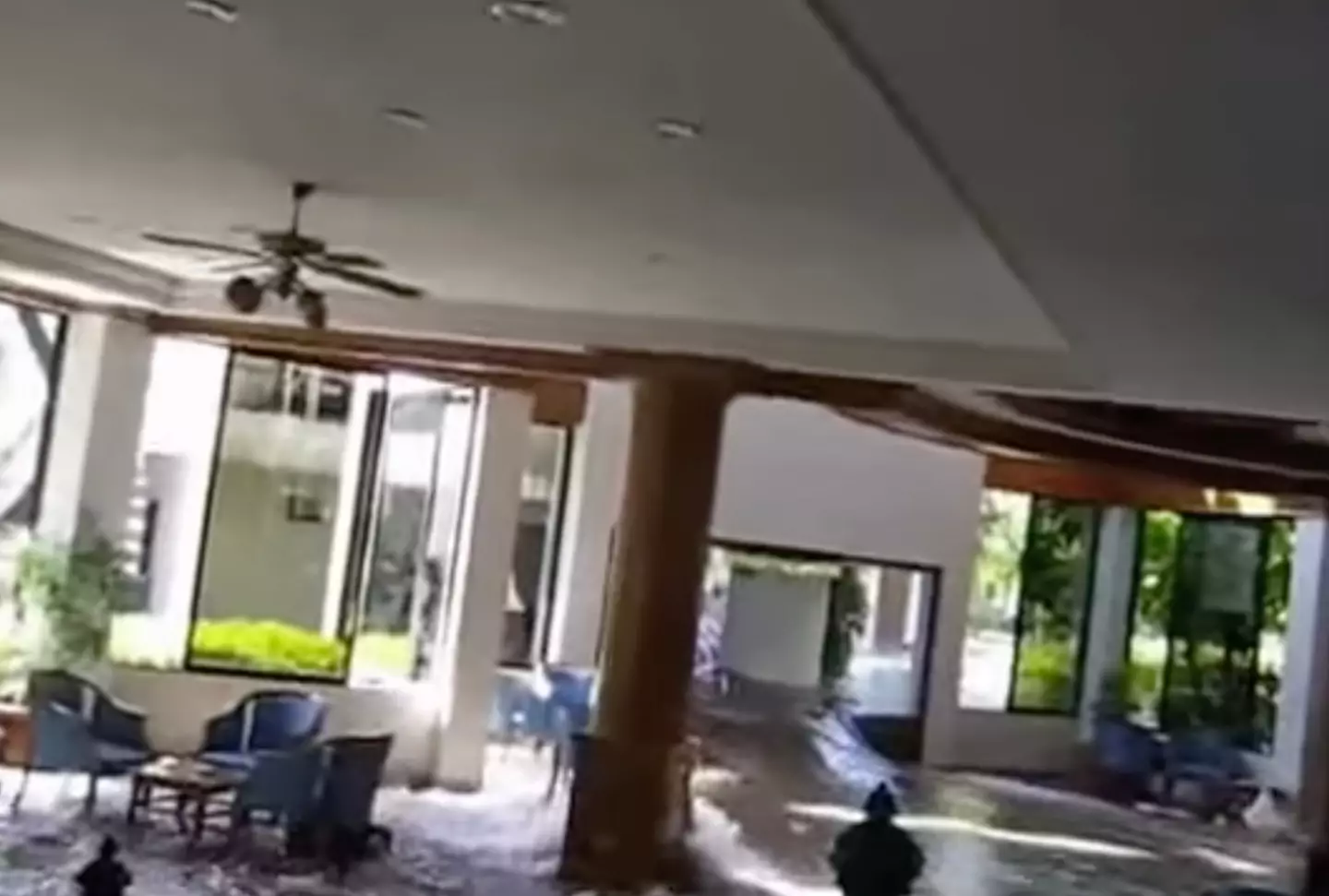
The hotel was flooded. (YouTube/@kallewidelius9395)
“You’re just an animal.
“You’re a creature at that moment paralysed by your fear.
“Everything just happened in the millisecond.”
An estimated 10,000 British tourists were affected by the tsunami, and 149 died.
A large majority were thought to be staying in beach resorts in Thailand and Sri Lanka.
Among the Brits who died was Sir Richard Attenborough’s 49-year-old daughter Jane Attenborough, and her 14-year-old daughter, who were holidaying in a resort when disaster struck.
In the twenty years after the devastating tsunami and earthquake, it’s been reported there are almost 400 victims that remain unidentified and unclaimed.
Featured Image Credit: YouTube/@kallewidelius9395)
Topics: World News, Environment, Travel
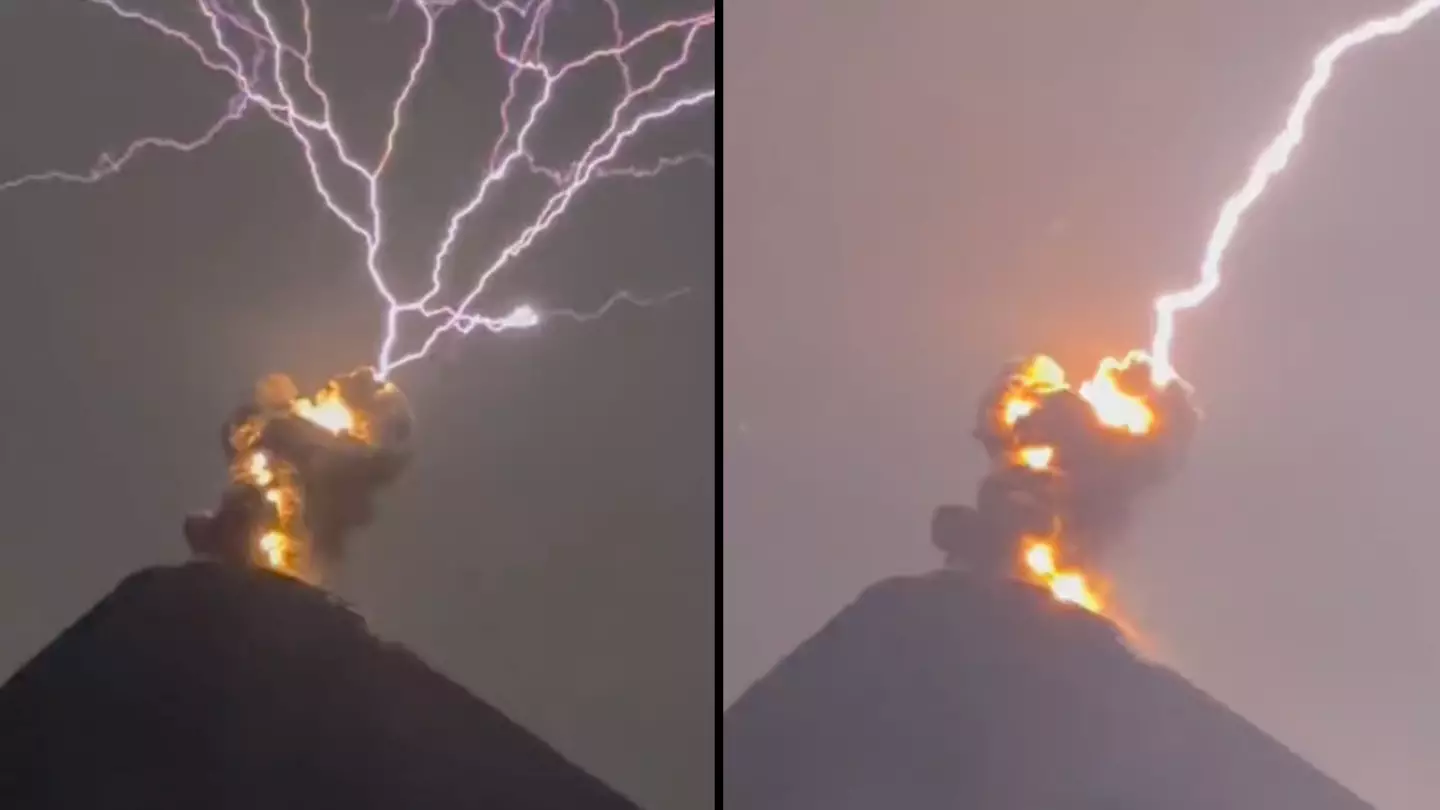
When Mother Nature wants to take charge there’s nothing you can do but sit back and hope for the best.
This was particularly the case with a viral video circulating around social media which shows the very moment molten lava meets lightning.
The two forces collide to make it look like The Undertaker returning to the WWE for the 100th time – and we’re all for it.

Two forces of nature colliding. (Getty Stock Images)
Taking to TikTok, the short clip shows orangey-red lava spilling from the top of the volcano and is hot enough to melt through steel by the way.
Then, out of nowhere, a lightening bolt appears to slash into the lava to create an incredible visual, which is hard to put into words.
But the idea that it’s the lava itself which reacts with the lightening isn’t exactly true.
So, when a volcano erupts it releases ash, gas, and lava into the air.
And the way it works is that the collision and friction between the volcanic particles create static electricity, which, under the right conditions, generates lightning within the volcanic plume.

The video went viral on social media. (TikTok/@brown_watermelon)
This volcanic lightning is sometimes referred to as a ‘dirty thunderstorm’ and it only ever happens in the atmosphere above the erupting volcano.
The lava itself does not cause lightning but contributes to the overall conditions that make this event possible.
Viewers were amazed by the footage, but equally half-expected Cars character Lightning McQueen to pop out as a visual, as he so often does on social media.
“Was I the only one thinking I was going to see Lightning McQueen this was better,” one person commented.
“So clearly I’ve got some trust issues, because I was expecting being tricked by another Lightning McQueen video.. I’m so happy that this time it was a real one,” a second penned.
As a third wrote: “A lifetime of video games has taught me one thing! There is a boss battle going on that mountain top!”
Another added: “Wow… once in a lifetime captured right there… you are truly blessed to have captured this.”
Now, as seen in other videos on social media, this event recently took place at the Volcán de Fuego in Guatemala.
The volcano has erupted in 2018, 2021, 2022 and 2023, as locals watched on from the capital, Guatemala City, 44km (27 miles) south-west of Fuego’s summit.
“Similarly (to a thunderstorm), in a volcanic eruption cloud, there are small particles of volcanic material colliding with one another at high speeds, and these collisions can result in separation of charges in the volcanic cloud that result in lightning,” said scientists at the University of Hawaii’s Center for the Study of Active Volcanoes.
Featured Image Credit: TikTok/@brown_watermelon
Topics: Environment, Science, World News, Viral, TikTok
.png)
Dramatic aerial footage shows a pod of killer whales hunting great white sharks in South Africa.
A team of researchers used a helicopter and a drone to capture the moment on film, with the clip believed to be the first ever aerial footage of orcas hunting and killing great white sharks. You can see the video here:
The incident, which was filmed back in May 2022, shows the pod of orcas from above in Mossel Bay, South Africa.
Although scientists were aware the killer whales can and do attack great whites, it had never been caught on camera like this before.
The footage was submitted alongside a paper published in The Ecological Society of America’s journal Ecology in October, and gave marine biologists a brand new insight into the clashes between the two major marine predators.
Lead author and senior shark scientist at Marine Dynamics Academy in Gansbaai, South Africa.
Alison Towner said: “This behaviour has never been witnessed in detail before, and certainly never from the air.”
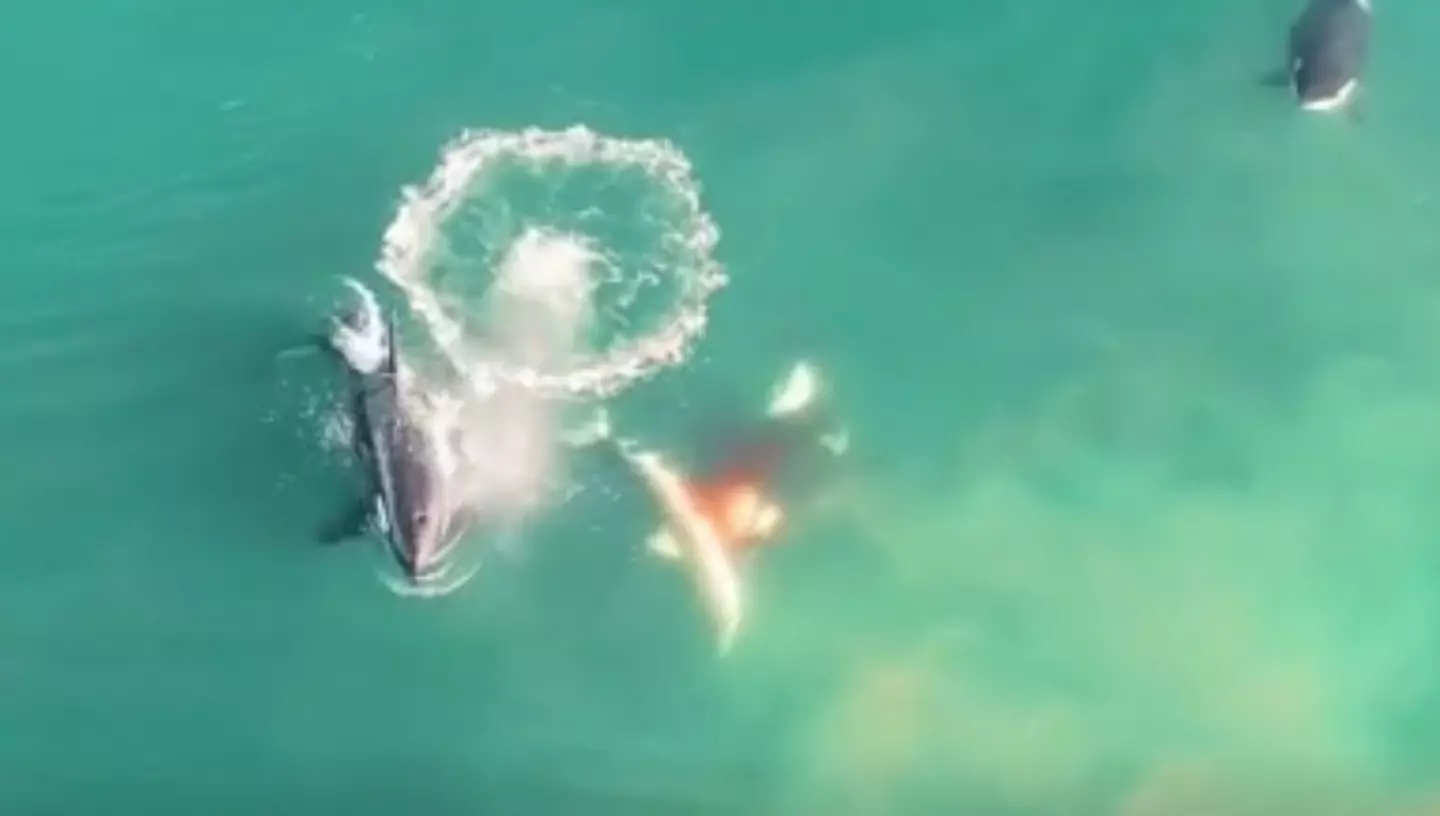
Discovery+
Only two killer whales in South Africa have been previously linked to hunting great whites, and only one of those was observed in the footage, along with four other killer whales. As such, the authors believe that the behaviour may be spreading.
The study also gives new insights into sharks’ attempts to evade capture by orcas.
On two occasions, orcas approached sharks closely and slowly, and rather than fleeing, the shark stayed close to the orca, keeping it in view – a common strategy that seals and turtles use to evade sharks.
So, perhaps having been put in the unusual position of being hunted, sharks copy the behaviour of those they hunt?
However, orcas are social and hunt in groups, and so researchers believe it might not be as effective for sharks to use in this situation.
“Killer whales are highly intelligent and social animals. Their group hunting methods make them incredibly effective predators,” said marine mammal specialist and study co-author Dr Simon Elwen, Director of Sea Search and a research associate at Stellenbosch University.
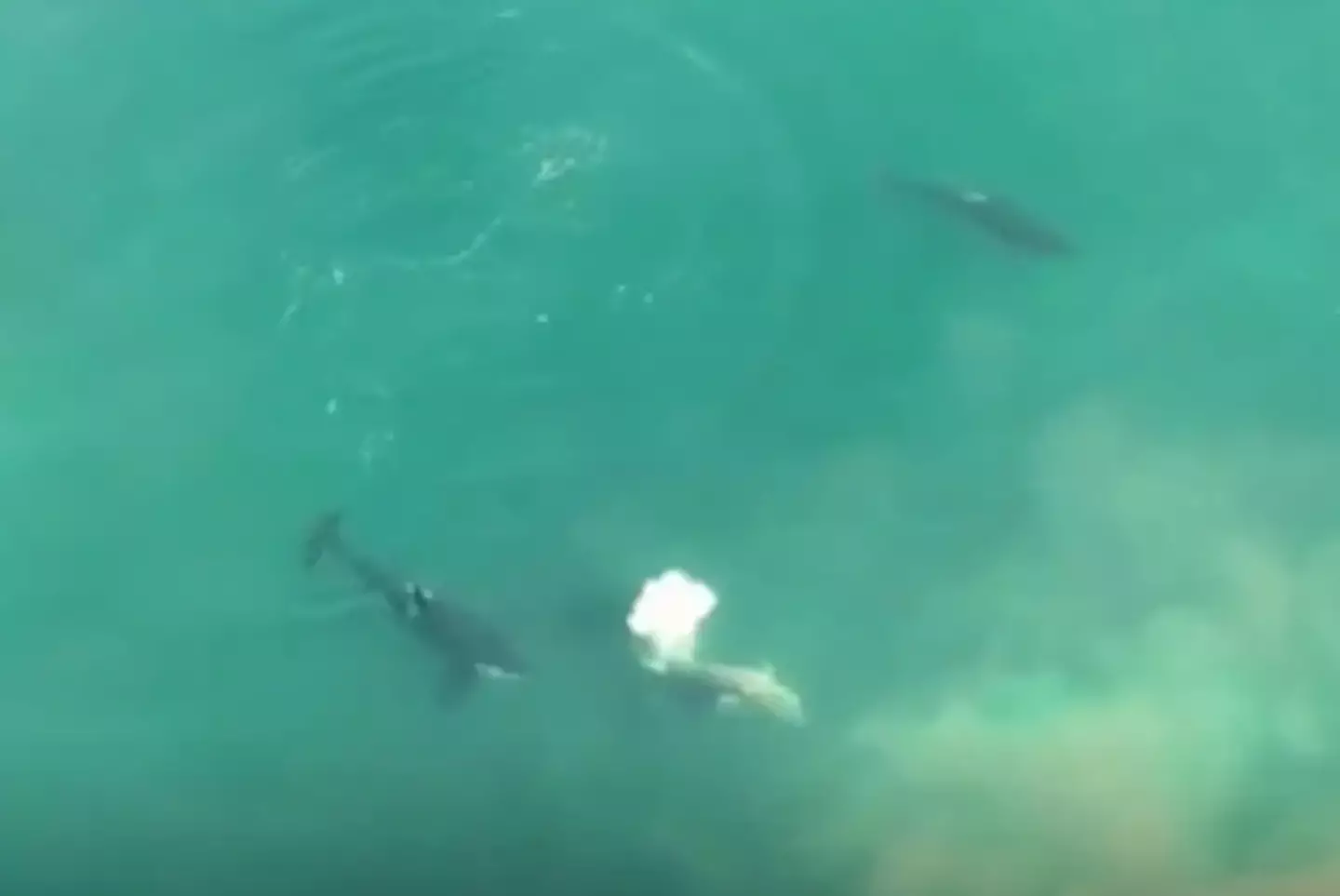
Discovery+
The study confirmed that one infamous killer whale – locally known as Starboard – was part of the pod and ate what was suspected to be a large piece of shark liver at the ocean surface. The footage also revealed how another killer whale bit into a white shark at the region of the liver.”I first saw Starboard in 2015 when he and his close-associated Port were linked to killing seven gill sharks in False Bay,” said David Hurwitz, a boat-based whale-watching operator from Simon’s Town Boat Company.
“We saw them kill a bronze whaler [copper shark] in 2019 – but this new observation is really something else.”
The new study also analysed drone and cage dive boat survey data before and after these predation events.
White sharks were seen on every survey day for the weeks prior to the predation event and multiple sharks were seen on the day of the predations.
However, only a single white shark was seen in the 45 days after the predations, confirming a flight response by sharks.
Featured Image Credit: Sea Search Research and Conservation
Topics: Animals, World News

If I asked you which organ was bigger in a tribe of people who for years have spent hours each day diving underwater to the point that their lung capacity is incredible, you’d probably guess it was the lungs.
However, the Bajau people who live across Indonesia, Malaysia and the Philippines are actually better endowed in the spleen department.
For almost 1,000 recorded years they’ve been diving into the sea, having lived off the nature that exists underwater by spearfishing and collecting shellfish.
A study of the Bajau found that they have a ‘mutated gene’ in the form of PDE10A, which correlates with a larger spleen size that helps them stay underwater for longer.
The Bajau can spend hours each day swimming underwater, and can hold their breath for several minutes at a time while also being able to dive down to incredible depths.
The University of Copenhagen’s Melissa Ilardo, one of the authors into the study of the Bajau, told the BBC’s Inside Science programme: “For possibly thousands of years, [they] have been living on house boats, travelling from place to place in the waters of South-East Asia and visiting land only occasionally. So everything they need, they get from the sea.

Diving down with wooden goggles and weights around their wastes, the Bajau have lived for countless generations off the produce of the sea. (BBC Global/YouTube)
“When they’re diving in the traditional way, they dive repeatedly for about eight hours a day, spending about 60 percent of their time underwater. So this could be anything from 30 seconds to several minutes, but they’re diving to depths of over 70m.”
That’s pretty incredible, but you might still be wondering what a mutated gene that gives you a larger spleen has to do with a human’s ability to swim underwater for longer periods at a time.
When you hold your breath and submerge yourself in the water it triggers a dive response, and you can do this to yourself just by submerging your face into cold water.
Triggering this response slows down your heart rate and makes the blood vessels in your extremities smaller in order to preserve supply for your vital organs.
This is where the spleen comes in, as it contracts due to the dive response and Ilardo said it was like ‘a reservoir for oxygenated red blood cells’ that functions ‘like a biological scuba tank’.
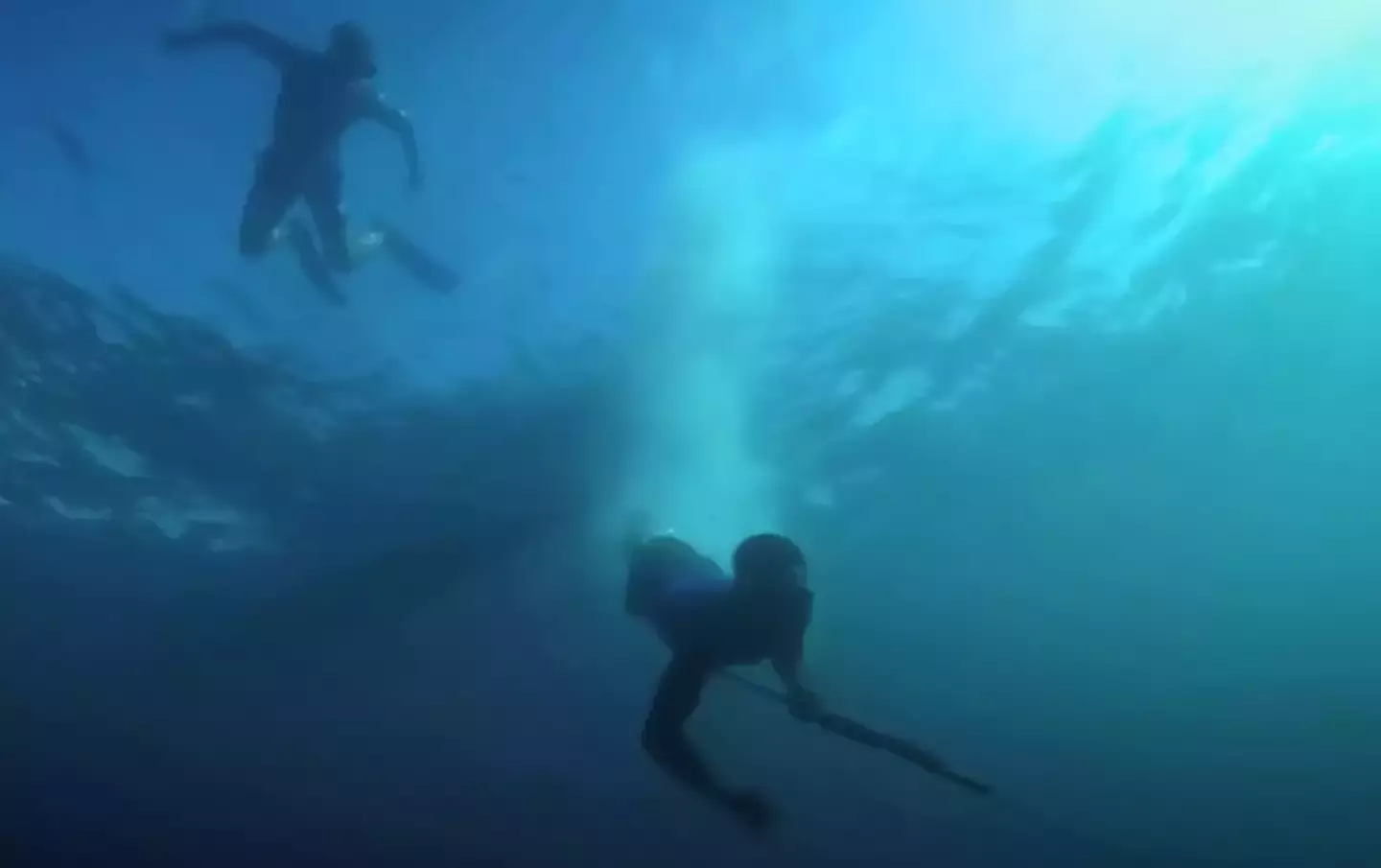
They’re so connected to the sea that their spleens are larger, but sadly they’re also first-hand witnesses to the damage done to our underwater environment. (BBC Global/YouTube)
In fact, her study of the Bajau found that they had spleens that were about 50 percent larger than their neighbours.
Sadly, a life so closely connected to the sea also means they’ve been among the most affected by climate change and ecological devastation of the oceans, as they’re often the first to suffer from things going wrong in the sea.
Damaged coral reefs have affected their way of life and they’ve seen significantly fewer fish in the sea, which is a major danger to people who for centuries have cultivated the ocean’s bounty.
There are also concerns that their culture is suffering in other ways due to the pollution of plastic.
Santarawi Lalisan, an elder statesman of the tribe, told Giuseppe from Project Happiness that their culture is now dying due to Western ways.
He said: “A lot of plastic has arrived here because today the Badjao go to the supermarket and here they use plastic and no longer paper. In the past, the Badjao only used paper when they were buying something.”
Featured Image Credit: BBC Global/YouTube
Topics: World News, Environment, Science